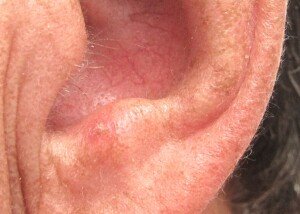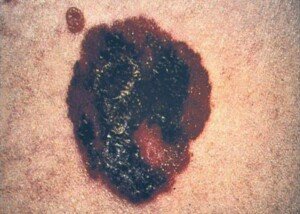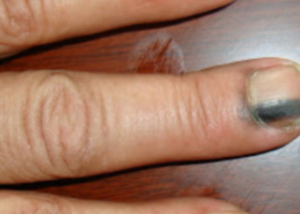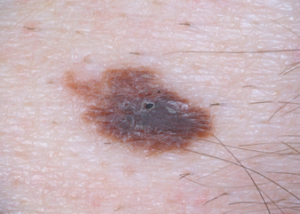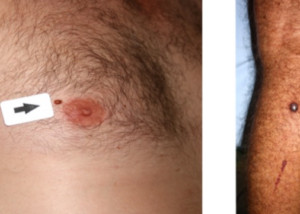Can Chronic Cervicitis Lead to Cancer?
Cervicitis is inflammation of the cervix, but can this turn into cancer?
This is a question that many women would like to know, so I posed it to Justin Chura, MD, a gynecological oncologist in Philadelphia, PA.
“Chronic cervicitis does not lead to cervical cancer,” says Dr. Chura. “Cervicitis means inflammation. Inflammation can have multiple causes. This can include infection.
“The cause of cervical cancer is the human papilloma virus. Most of the time, chronic cervicitis is asymptomatic.
“Meaning, findings are seen on a Pap test, but the patient has no symptoms. When this is the case there is no recommended intervention.”
Perhaps the fear that cervicitis can lead to cancer or raise the risk of it originates from the fact that it can be discovered with a Pap smear — some patients wrongly connect dots and draw erroneous conclusions.
The risk of cervical cancer goes UP when a woman has multiple sex partners! A sexually active woman should have a Pap smear annually.
 Dr. Chura provides standard cancer care and robotic surgery for cancers of the cervix, ovary, uterus/endometrium and vulva. He is affiliated with multiple hospitals including Jefferson Einstein Philadelphia Hospital-Jefferson Health and City of Hope Cancer Center Atlanta, and has been in practice for 20+ years.
Dr. Chura provides standard cancer care and robotic surgery for cancers of the cervix, ovary, uterus/endometrium and vulva. He is affiliated with multiple hospitals including Jefferson Einstein Philadelphia Hospital-Jefferson Health and City of Hope Cancer Center Atlanta, and has been in practice for 20+ years.
 Lorra Garrick has been covering medical, fitness and cybersecurity topics for many years, having written thousands of articles for print magazines and websites, including as a ghostwriter. She’s also a former ACE-certified personal trainer.
Lorra Garrick has been covering medical, fitness and cybersecurity topics for many years, having written thousands of articles for print magazines and websites, including as a ghostwriter. She’s also a former ACE-certified personal trainer.
.
Top image: ©Lorra Garrick
Does Cervical Dysplasia Always Turn into Cancer?

“Just because a woman is diagnosed with cervical dysplasia does not mean that she will develop cervical cancer,” says Justin Chura, MD, a gynecological oncologist in Philadelphia, PA.
A Pap smear will detect cervical dysplasia, which means atypical cell growth that’s non-malignant.
Dr. Chura explains, “For women with mild cervical dysplasia, no treatment is recommended, as this process resolves on its own most of the time.
“In addition, mild cervical dysplasia does not lead to cervical cancer. Severe cervical dysplasia, however, can lead to cervical cancer if not treated.
“Fortunately, treatments such as a cone biopsy are very effective in preventing this process from turning into cervical cancer.
“For some women with severe dysplasia, hysterectomy may also be an appropriate treatment option. The progression from severe dysplasia to cancer takes several years to occur.”
Luck of the Draw: Who Will and Won’t Develop Cervical Cancer
Dr. Chura explains, “The problem is that we do not know for which patient it will turn into cancer and for which patient it will not.
“One risk factor that a woman can control in potentially decreasing the risk of dysplasia progressing the cancer is exposure to tobacco.
“In other words, smoking should be avoided in women within all women, but especially in women with cervical dysplasia or cervical cancer.” Quit smoking!
 Dr. Chura provides standard cancer care and robotic surgery for cancers of the cervix, ovary, uterus/endometrium and vulva. He is affiliated with multiple hospitals including Jefferson Einstein Philadelphia Hospital-Jefferson Health and City of Hope Cancer Center Atlanta, and has been in practice for 20+ years.
Dr. Chura provides standard cancer care and robotic surgery for cancers of the cervix, ovary, uterus/endometrium and vulva. He is affiliated with multiple hospitals including Jefferson Einstein Philadelphia Hospital-Jefferson Health and City of Hope Cancer Center Atlanta, and has been in practice for 20+ years.
 Lorra Garrick has been covering medical, fitness and cybersecurity topics for many years, having written thousands of articles for print magazines and websites, including as a ghostwriter. She’s also a former ACE-certified personal trainer.
Lorra Garrick has been covering medical, fitness and cybersecurity topics for many years, having written thousands of articles for print magazines and websites, including as a ghostwriter. She’s also a former ACE-certified personal trainer.
.
Top image: ©Lorra Garrick
What’s that Discharge after Colposcopy and Cervical Biopsy?

Here’s reassuring information about your discharge after a colposcopy and cervical biopsy.
Just how common is the discharge?
“Experiencing discharge after colposcopy and cervical biopsy is common,” says Justin Chura, MD, a gynecological oncologist in Philadelphia, PA.
Causes of the Discharge
“Sometimes the discharge can be due to medications applied to the cervix to stop any bleeding after the biopsy,” says Dr. Chura.
“A common medication will often cause a discharge that looks like coffee grounds when it mixes with blood.
“Discharge can also be part of the healing process from the biopsies.
“As long as the discharge does not have a significant odor and there are no associated fevers or other significant pain, this usually stops within two weeks after biopsy.”
What is a colposcopy?
The purpose of a colposcopy, which takes five to 10 minutes, is to closely examine the cervix, vagina and vulva for any signs of disease.
The instrument that’s used is a colposcope, which is a lighted, magnifying device.
Why would a doctor would recommend a colposcopy?
One reason is an abnormal Pap smear result. Another reason is unexplained vaginal bleeding.
During a colposcopy, tissue is removed that can be sent to the lab for a biopsy.
A colposcopy can show the following:
- Precancerous changes in cervical tissue
- Precancerous changes in vaginal tissue
- Precancerous changes vulvar tissue
Complications of the procedure that are worrisome do not include the commonly observed discharge.
Call your physician if you experience any of the following:
- Bleeding heavier than what you typically experience during menstruation
- Chills or fever
- Severe abdominal pain
Are you terrified of your upcoming colposcopy?
To ease your anxiety, think of a colposcopy for what it actually is: a closer way for a doctor to examine your cervix, vagina and vulva, and a more effective way to collect tissue.
A recommendation for the procedure itself DOES NOT MEAN YOU HAVE CANCER.
 Dr. Chura provides standard cancer care and robotic surgery for cancers of the cervix, ovary, uterus/endometrium and vulva. He is affiliated with multiple hospitals including Jefferson Einstein Philadelphia Hospital-Jefferson Health and City of Hope Cancer Center Atlanta, and has been in practice for 20+ years.
Dr. Chura provides standard cancer care and robotic surgery for cancers of the cervix, ovary, uterus/endometrium and vulva. He is affiliated with multiple hospitals including Jefferson Einstein Philadelphia Hospital-Jefferson Health and City of Hope Cancer Center Atlanta, and has been in practice for 20+ years.
 Lorra Garrick has been covering medical, fitness and cybersecurity topics for many years, having written thousands of articles for print magazines and websites, including as a ghostwriter. She’s also a former ACE-certified personal trainer.
Lorra Garrick has been covering medical, fitness and cybersecurity topics for many years, having written thousands of articles for print magazines and websites, including as a ghostwriter. She’s also a former ACE-certified personal trainer.
.
Top image: Freepik
Two Ways Melanoma Can Become Deadly

If melanoma is caught early enough, it’s highly curable, but many people let it slip by, and this is how this deadly skin cancer can get past even health-conscious people.
Two ways that this can happen stand out to Dr. Janet Prystowsky, board certified dermatologist in New York, NY, with 30+ years’ experience.
“One way is that a change noted in a mole has already gone too far by the time you seek attention,” begins Dr. Prystowsky.
“For instance, when a melanoma is already bleeding at the time of diagnosis, it has ulcerated and the risk is high that the melanoma has already metastasized.
“Even determination of the actual thickness of the melanoma [in the case of a bleeding one], an important factor in assessing the risk of the melanoma, is compromised because the top of it has been destroyed.”
Appearance
“The second way is that some melanomas do not look like the usual pictures of melanoma and they can grow quickly,” continues Dr. Prystowsky.
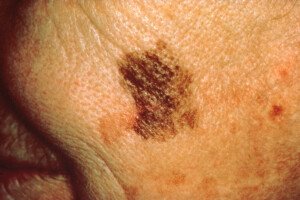
Melanoma on a cheek
“This nodular type of melanoma may have no brown or black color and may look like a pink to reddish bump on the skin.
“Usually the only reason for testing it is that it is a new bump or it may resemble a basal cell carcinoma; the biopsy result for doctor and patient is typically a surprise.
“Nodular melanoma can be particularly deadly because it is capable of metastasizing from the beginning of its existence.
“An early diagnosis and treatment does not guarantee a cure. Approximately 15% of all melanomas are in this category and it is very bad luck for the patient.”
Spread
“Once melanoma has metastasized, regardless of the original type of melanoma, it has spread to lymph nodes or other organs.
“This is very serious because it may cause death.
“There are several new treatment advances which can now put metastatic melanoma into remission, but they do not work on all patients.”
Prevention and Screening
Dr. Prystowsky stresses the importance of avoiding excessive sun exposure and avoiding tanning beds; using a sunscreen with an SPF of at least 30 and getting regular clinical skin exams by a dermatologist.
She recommends the ABCDEs:
Dr. Prystowsky explains that “A stands for asymmetry, as in a lopsided appearance to the mole.
“B stands for border irregularity of the mole, as in the appearance of the coast of Maine on a map.
“C stands for colors that are not uniform in the mole or a color change.
“D stands for the diameter of the mole. If the mole is over 6 mm in diameter, the risk is greater that the mole is abnormal.
“E stands for evolving because a mole that is changing such as itching, bleeding or showing other new symptoms suggests a possibility of melanoma.
“Because about 50% of melanomas arise in a pre-existing mole, seeing these changes in a mole should prompt a visit to the dermatologist.”
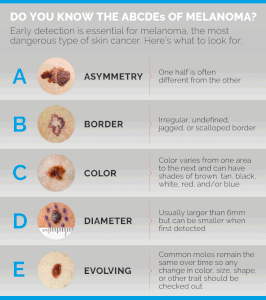

In combination with her focus on early skin cancer detection and removal, Dr. Prystowsky provides a wide range of revitalizing and rejuvenating treatments.
 Lorra Garrick has been covering medical, fitness and cybersecurity topics for many years, having written thousands of articles for print magazines and websites, including as a ghostwriter. She’s also a former ACE-certified personal trainer.
Lorra Garrick has been covering medical, fitness and cybersecurity topics for many years, having written thousands of articles for print magazines and websites, including as a ghostwriter. She’s also a former ACE-certified personal trainer.
.
Top image: Shutterstock/wavebreakmedia
Melanoma: How Not to Let This Deadly Skin Cancer Get Past You

There’s a disturbing case of a young woman who let melanoma skin cancer get past her, and as a result, she died. But it didn’t have to be this way.
Melanoma kills about 10,000 Americans every year. This skin cancer kills by spreading to organs.
But melanoma has a near-100 percent cure rate if caught early. All a person needs to do is check his/her skin for suspicious moles.
Sounds simple enough, but many people will see a suspicious mole and make excuses not to see a doctor. I one day read about a woman with melanoma, and the poor service by her doctors was alarming.
This young woman with melanoma died, and it’s impossible to rule out that this cancer death can be traced back to inept doctors.
If you have a mole removal, there are things you absolutely must know:
- The doctor should be a dermatologist.
- The doctor should remove not just the mole, but a margin of skin around the mole and beneath it.
- The doctor should send all of this tissue to a pathology lab to see if the cells are melanoma or other skin cancer.
In the case of the melanoma death, the patient wanted mole removal for cosmetic reasons. She was 14 and the mole was on her back/shoulder area.
About six years later the scar from the mole removal began itching and bleeding.
A doctor diagnosed an infection and prescribed antibiotics. He didn’t even scrape a tissue sample for biopsy.
If I recall the magazine article correctly, I think it was this doctor who found a swollen lymph node in the woman’s neck and thus, she saw another doctor for that.
In this next exam, the doctor was suspicious about the mole removal scar and had a sample tested for cancer.
• It came back positive for melanoma.
• The melanoma eventually spread and killed the young woman.
Steps to Take for a Favorable Outcome
- The patient needs to be informed ahead of time by doing some “homework.” Don’t walk into a doctor’s office completely in the dark without a clue. Medical errors are a leading cause of death in the U.S. (cdc.gov/HAI/surveillance/).
A favorable outcome is far more likely if a patient or patient’s parent always adheres to this rule:
If something is removed from the body, insist that the doctor send it to a lab for a biopsy, REGARDLESS of what the doctor thinks it is.
Do not let a doctor’s assurance of, “Oh, it’s nothing to worry about,” con you into passing up a biopsy. Over a million people in America every year are diagnosed with skin cancer.
In the case of the young women with melanoma, though this was six years before the area started showing symptoms, it’s possible that a biopsy would have revealed atypical or abnormal cells: a red flag for future cancer.
The doctor should have taken it upon himself to send the mole and skin tissue to a lab, whether or not the patient requested a biopsy.
It was later learned that the doctor had thrown out the tissue instead!
- Laypeople need to realize that they should be proactive with the health of their skin and body. Even if a mole removal is done for cosmetic purposes, insist on a biopsy regardless of what the doctor says.
Another problem is that many people are afraid to question a doctor or make sure a doctor does A, B and C.
When I had a patch of skin scraped for biopsy, I jokingly said to the doctor when I saw her pick up the little container that had the tissue, “Oh, make sure my full name is on there!” (The result was benign.)
WE ARE THE CUSTOMER. We are paying the doctor for a service. We have as much right to question a doctor and make sure he does A, B and C, as we do the people who are building a house for us, or laying in our new carpet, or putting in our new furnace, or fixing our car’s engine!
Take a good look at the different melanomas below.
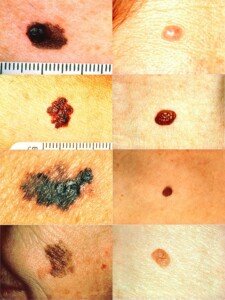
The person who wouldn’t hesitate to oversee what a mechanic is doing to his car might be the very same person who’s afraid to ask a doctor lots of questions!
- Six years later when the mole removal area began itching and bleeding, this should have been a red flag for melanoma. When you have this basic knowledge, it will profoundly affect the outcome. When you don’t have this knowledge, precious time is wasted (during which melanoma grows) before the correct diagnosis is finally made.
If a mole is changing, suspicious, or the mole removal scar is doing strange things, FIRST THINK MELANOMA. Do not think anything else.
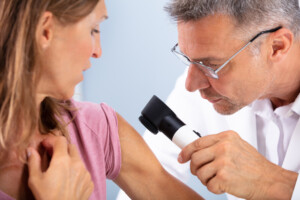
Shutterstock/Andrey_Popov
When you first think melanoma, you then can’t help but act accordingly, in that you will demand a biopsy rather than settle for a benign diagnosis.
Yes, we’d all like to hear it’s just an infection. But unless you have that biopsy, you cannot rest assured it’s not melanoma.
I can’t believe a doctor could look at an itching, bleeding scar and exclude melanoma without a lab test.
Though nobody likes to automatically default to an “It’s melanoma” mindset, this is what MUST be done.
The next step is see a dermatologist ASAP and insist on a biopsy to rule out melanoma.
No. 1 course of action when a mole removal scar, or mole, itches and bleeds: SEE IF A DERMATOLOGIST CAN RULE OUT MELANOMA — and not with a visual inspection, but with a BIOPSY.
Always assume the worst, and then work backwards from that worst-case scenario. This is the difference between life and death.
“With melanoma there is no guaranteed way to make sure it does not get past you,” says Dr. Janet Prystowsky, board certified dermatologist in New York, NY, with 30+ years’ experience.
Nevertheless, it really pays to become very acquainted with the warning signs of this disease.
Melanoma can be deadly two ways: Dr. Prystowsky explains.

In combination with her focus on early skin cancer detection and removal, Dr. Prystowsky provides a wide range of revitalizing and rejuvenating treatments.
 Lorra Garrick has been covering medical, fitness and cybersecurity topics for many years, having written thousands of articles for print magazines and websites, including as a ghostwriter. She’s also a former ACE-certified personal trainer.
Lorra Garrick has been covering medical, fitness and cybersecurity topics for many years, having written thousands of articles for print magazines and websites, including as a ghostwriter. She’s also a former ACE-certified personal trainer.
Tanning & Teens: Skin Problems from Actinic Keratosis

Yes, that deep bronze or golden tan on your young body looks awesome, but here’s a big question:
Why would actinic keratoses ignore you when it’s time to aggravate an adult who used to worship the sun? And, actinic keratosis is PRECANCER.
“Actinic keratoses are skin growths that occur from excessive ultraviolet ray exposure either from the sun or tanning parlor exposure,” says Dr. Janet Prystowsky, board certified dermatologist in New York, NY, with 30+ years’ experience.
Getting these red, rough and scaly patches all over your skin is the result of lots of sun exposure during your youth and teen years.
I have three very tanned teen nephews and one golden-tanned teen niece, plus a few younger.
The three bronze tanned are 19, 17 and 14. The one teen, 14, and his 12- and 9-year-old siblings spend plenty of time in the sun every summer. The tanning is sowing seeds for getting actinic keratosis.
Teens may not care what happens when they’re older, but sometimes, your sun worshipping past will start to haunt you as early as in your 30s.
“Actinic keratoses do not occur early after excessive sun damage; typically patients are in their 40s or older,” says Dr. Prystowsky.
“Once they start showing up, however, it keeps happening and becomes a chronic skin maintenance concern requiring a dermatologist to guide through various treatment options.”
And though 40s may still seem like a long way from your current teen life, the time is NOW to start thinking how lousy things will be as an adult if your now tanned skin were potentially full of scars years later that may result (not always) from removal.
These red-pink, rough scaly lesions are sun damage and begin gradually, and may go unnoticed for a time, especially if located on the legs, back and feet.
Actinic keratoses are quite common, but the extent of developing these precancerous patches is quite variable.
An adult who always had a “healthy looking” golden glow as a teen may end up suffering from hundreds of actinic keratoses lesions by age 45.
If you’re a teen, is all the tanning worth it? Many teens avoid smoking, but then these same teens will bask in the sun and proudly show their dark tans.
Is the deep tan really worth it? It has been said that teens aren’t clueful enough to imagine their life years down the road. Do you think you’re this clueless? If not, then imagine how you want your skin to appear years from now.
Actinic keratosis is directly tied to sun exposure and tanning in youth, and has the potential to leave dozens and even hundreds of unsightly red marks all over one’s body.
“Treatment of actinic keratoses is advised because they can evolve into skin cancers called squamous cell carcinomas and possibly basal cell carcinoma,” says Dr. Prystowsky.
“If untreated and they have evolved into skin cancer, treatment is mandatory. If untreated, the skin cancers invade deeper into tissues and can have an adverse effect on local tissues as well as spread internally if neglected.”
Actinic keratoses are called precancerous lesions for good reason. Though only 5-10 percent of cases result in cancer and this typically takes years, it’s no picnic when it actually happens.
But even with those odds, who can actually feel secure having just been diagnosed with a precancerous lesion?
Pale skin is healthy and does not equate to poor health. DON’T FRY NOW and PAY LATER with actinic keratoses: precancer!

In combination with her focus on early skin cancer detection and removal, Dr. Prystowsky provides a wide range of revitalizing and rejuvenating treatments.
 Lorra Garrick has been covering medical, fitness and cybersecurity topics for many years, having written thousands of articles for print magazines and websites, including as a ghostwriter. She’s also a former ACE-certified personal trainer.
Lorra Garrick has been covering medical, fitness and cybersecurity topics for many years, having written thousands of articles for print magazines and websites, including as a ghostwriter. She’s also a former ACE-certified personal trainer.
Are Flat Moles Safer than Raised or Equally Prone to Melanoma?
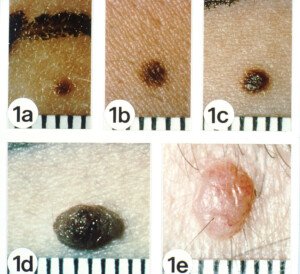
Have you noticed that some of your moles are raised, that is, clearly higher than the surface of the skin around them?
This doesn’t refer to moles that used to be flat and are now raised, but those that have always been this way—for as long as you can remember.
Perhaps you’re now wondering if these are more likely to transform into melanoma, a rare but deadly skin cancer if not caught in time.
So are raised moles more likely to develop into melanoma?
“NO,” says Dr. David Rahimi, MD, F.A.A.D., a board-certified dermatologist and cosmetic surgeon, and founder of Foreveryoung.net.
Dr. Rahimi explains, “The raised quality of a mole has nothing to do with its risk of malignant transformation or melanoma.”
Do you know your ABCDEs?
If you clicked on this article, you’re most likely familiar with the ABCDEs of checking lesions on your skin, so I won’t go into detail about this.
However, it’s reassuring to point out that Dr. Rahimi notes that the ABCDEs of screening for skin cancer do not mention anything about the “raised quality” of moles, birthmarks or freckles.
It’s crucial to get to know the natural marks and spots on your body so that, if they do begin changing in appearance, you’ll have a reference point.
Learn what’s normal for you. And have your skin checked by a dermatologist every year, even if this is not covered by your medical insurance.
Raised Moles Becoming Irritated
Depending on the location, a raised mole can receive recurring irritation from a piece of clothing.
This will not increase its malignant potential.
But if you decide to have a mole removed to avoid irritation or for cosmetic purposes, the rule of thumb is to always request that it be biopsied …
… not because it’s raised but because ANY mole that’s removed for ANY reason should always be biopsied.


Dr. Rahimi is the founder of Forever Young, Inc.
 Lorra Garrick has been covering medical, fitness and cybersecurity topics for many years, having written thousands of articles for print magazines and websites, including as a ghostwriter. She’s also a former ACE-certified personal trainer.
Lorra Garrick has been covering medical, fitness and cybersecurity topics for many years, having written thousands of articles for print magazines and websites, including as a ghostwriter. She’s also a former ACE-certified personal trainer.
Black Area on Big Toenail: Melanoma or ??
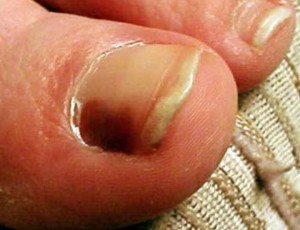
A black area or streak on the big toenail can have multiple causes, and one of them is melanoma.
What are all the things that a black spot or area on the big toenail can possibly mean?
“Fungus, bleeding under the toenail from trauma (talin Noire, runner’s nail), congenital mole, atypical mole, melanoma,” says Dr. David Rahimi, MD, a board-certified dermatologist and cosmetic surgeon.
What are the odds that this sign is melanoma?
Dr. Rahimi says, “Melanoma under the nail is very uncommon.
“I have seen four in 16 years of clinical practice. It is more common in patients with darker skin color: Asian, Hispanics and African Americans.”
Tell-tale features of melanoma?
“If the spot has been there for months, growing in darkness and size, and most importantly:
“Pigmentation in the proximal nail folds — meaning, the color is spilling into the skin portion of the nail. This is called the Hutchinson’s sign.”
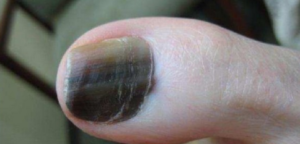
Hutchinson’s sign
NOTE: Melanoma in the toenail can occur even if the patient’s foot has had very little lifetime exposure to the sun.
Unlike other forms of melanoma that are typically linked to sun exposure, melanoma in the toenail may arise due to different factors, including genetic predisposition or other internal mechanisms that aren’t even fully known.
Diagnosis requires a biopsy, where a sample of the affected nail or surrounding tissue is examined for cancerous cells.
Unfortunately, there are no known preventive measures for the development of a melanoma in a toenail, whether it’s the big toe or the pinky.
What you can do is make sure you inspect your toenails and feet on a regular basis for any newly-developing dark spots, streaks, lines or smudge-like lesions.
Even if you habitually wear polish, at least make a point to give your toes a good view when it’s time to remove the polish.
Keeping your feet and toenails clean will also help in noticing unusual changes.
Always look at your feet! This includes between the toes and on the soles.
Have a dermatologist inspect your feet once a year.

Dr. Rahimi is the founder of Forever Young, Inc.
 Lorra Garrick has been covering medical, fitness and cybersecurity topics for many years, having written thousands of articles for print magazines and websites, including as a ghostwriter. She’s also a former ACE-certified personal trainer.
Lorra Garrick has been covering medical, fitness and cybersecurity topics for many years, having written thousands of articles for print magazines and websites, including as a ghostwriter. She’s also a former ACE-certified personal trainer.
Atypical Melanocytic Hyperplasia vs. In Situ Melanoma
Are atypical melanocytic hyperplasia and in situ melanoma one and the same?
“Yes, I consider them the same thing; it all depends who is reading the slides,” says Dr. David Rahimi, MD, F.A.A.D., board-certified dermatologist and cosmetic surgeon.
I was inspired to write this article because I read about a man whose biopsy result came back “benign.”
He asked to see the report a few years later and saw the phrasing “atypical melanocytic hyperplasia” and then “in situ melanoma.”
He was alarmed that he had been told it was benign.
Pathologist Dependent
Dr. Rahimi explains, “Newer microscopes and staining of the tissue allow a pathologist to look at individual cells and make a judgement call.
“Five skilled and experienced pathologists may look at the same slide and have two widely different interpretations ranging from mildly atypical to severely atypical.
“The two sides of the spectrum, normal and clearly melanoma, are easily identified.
“Everything in between is fuzzy and has been ‘interpreted’ by the pathologist.
“Also, often the specimen is ‘cut again’ for additional slides to be taken to a new doctor for a second evaluation.
“These second cuts or deeper cuts may look different (better or worse) and this often complicates the issue.”
And by the way, whenever you have a mole removed — regardless of the reason — be it for cosmetic purposes, or because it gets irritated from clothes due to its location, or you just have a funny feeling about the spot — GET IT BIOPSIED.

So what should you do when the biopsy report comes back?
Request to see the biopsy report of your mole or suspicious spot…immediately, and read it word for word.
“Atypical” refers to a cell that’s not typical.
“Hyperplasia” refers to excessive but benign growth; and “in situ” means very locally confined.

Dr. Rahimi is the founder of Forever Young, Inc.
 Lorra Garrick has been covering medical, fitness and cybersecurity topics for many years, having written thousands of articles for print magazines and websites, including as a ghostwriter. She’s also a former ACE-certified personal trainer.
Lorra Garrick has been covering medical, fitness and cybersecurity topics for many years, having written thousands of articles for print magazines and websites, including as a ghostwriter. She’s also a former ACE-certified personal trainer.
.
Top image: Shutterstock/wavebreakmedia
Nodular Melanoma Can Spread in Just Days
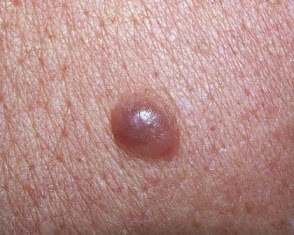
A dermatologist says, “Nodular melanoma can spread very quickly; within a matter of days or weeks.”
“A nodular melanoma can stay in the same spot for months and even rarely years; or spread into lymphatics and blood vessels very quickly.
“The consensus it that nodular melanoma does spread very quickly.
“In contrast, superficial spreading melanoma or melanoma in situ can stay in the same spot for years without spreading.”
What is nodular melanoma?
It’s a very rare form of skin cancer that grows more vertically than laterally or horizontally.
As the name implies, the growth looks like a nodule.
It typically presents as a raised, dark and sometimes irregularly shaped lesion, though it can also be reddish.
The rapid, downward growth can increase the risk of the cancer spreading to other parts of the body.

Shutterstock/Scio21
As mentioned, nodular melanoma is capable of rapid growth, meaning quickly growing in size — deeply penetrating downward into the skin’s deeper layers.
It can develop in regular skin or even within a melanoma of the superficial spreading type.
Nodular melanoma can occur in people with very dark skin, though this is exceedingly rare.
It’s not as associated with exposure to the sun as much as is the more common forms of this skin cancer, even though the most common locations are the normally exposed areas of the neck and head.
If you have a hard lump or nodular-shaped bump that’s new, and especially if it’s dark, black, itching, stinging or crusting, and if it seems to be growing or rapidly progressing, then get it checked out immediately. This includes a biopsy.



















